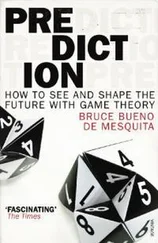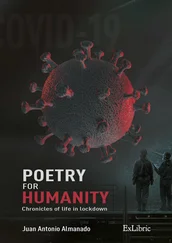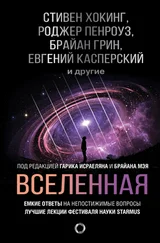Could this be true? A challenge for twenty-first-century physics is to answer two questions. First, are there many ‘big bangs’ rather than just one? Second—and this is even more interesting—if there are many, are they all governed by the same physics?
If we’re in a multiverse, it would imply a fourth and grandest Copernican revolution; we’ve had the Copernican revolution itself, then the realisation that there are billions of planetary systems in our galaxy; then that there are billions of galaxies in our observable universe. But now that’s not all. The entire panorama that astronomers can observe could be a tiny part of the aftermath of ‘our’ big bang, which is itself just one bang among a perhaps infinite ensemble.
(At first sight, the concept of parallel universes might seem too arcane to have any practical impact. But it may [in one of its variants] actually offer the prospect of an entirely new kind of computer: the quantum computer, which can transcend the limits of even the fastest digital processor by, in effect, sharing the computational burden among a near infinity of parallel universes.)
Fifty years ago, we weren’t sure whether there had been a big bang. My Cambridge mentor Fred Hoyle, for instance, contested the concept, favouring a ‘steady state’ cosmos that was eternal and unchanging. (He was never fully converted—in his later years he espoused a compromise idea that might be called a ‘steady bang’.) Now we have enough evidence to delineate cosmic history back to the ultradense first nanosecond—with as much confidence as a geologist inferring the early history of Earth. So in fifty more years, it is not overoptimistic to hope that we may have a ‘unified’ physical theory, corroborated by experiment and observation in the everyday world, that is broad enough to describe what happened in the first trillionth of a trillionth of a trillionth of a second—where the densities and energies were far higher than the range in which current theories apply. If that future theory were to predict multiple big bangs we should take that prediction seriously, even though it can’t be directly verified (just as we give credence to what Einstein’s theory tells us about the unobservable insides of black holes, because the theory has survived many tests in domains we can observe).
We may, by the end of this century, be able to ask whether or not we live in a multiverse, and how much variety its constituent ‘universes’ display. The answer to this question will determine how we should interpret the ‘biofriendly’ universe in which we live (sharing it with any aliens with whom we might one day make contact).
My 1997 book, Before the Beginning , [6]speculated about a multiverse. Its arguments were partly motivated by the seemingly ‘biophilic’ and fine-tuned character of our universe. This would occasion no surprise if physical reality embraced a whole ensemble of universes that ‘ring the changes’ on the basic constants and laws. Most would be stillborn or sterile, but we would find ourselves in one of those where the laws permitted emergent complexity. This idea had been bolstered by the ‘cosmic inflation’ theory of the 1980s, which offered new insights into how our entire observable universe could have ‘sprouted’ from an event of microscopic size. It gained further serious attention when string theorists began to favour the possibility of many different vacuums—each an arena for microphysics governed by different laws.
I’ve ever since had a close-up view of this shift in opinion and the emergence of these (admittedly speculative) ideas. In 2001, I helped organise a conference on this theme. It took place in Cambridge, but not in the university. I hosted it at my home, a farmhouse on the edge of the city, in a converted barn that offered a somewhat austere location for our discussions. Some years later, we had a follow-up conference. This time the location was very different: a rather grand room in Trinity College, with a portrait of Newton (the college’s most famous alumnus) behind the podium.
The theorist Frank Wilczek (famous for his role, while still a student, in formulating what is called the ‘standard model’ of particle physics) attended both meetings. When he spoke at the second, he contrasted the atmosphere at the two gatherings.
He described physicists at the first meeting as ‘fringe’ voices in the wilderness who had for many years promoted strange arguments about conspiracies among fundamental constants and alternative universes. Their concerns and approaches seemed totally alien to the consensus vanguard of theoretical physics, which was busy successfully constructing a unique and mathematically perfect universe. But at the second meeting, he noted that ‘the vanguard had marched off to join the prophets in the wilderness’.
Some years ago, I was on a panel at Stanford University where we were asked by the chairman: ‘On the scale, “would you bet your goldfish, your dog, or your life,” how confident are you about the multiverse concept?’ I said that I was nearly at the dog level. Andrei Linde, a Russian cosmologist who had spent twenty-five years promoting a theory of ‘eternal inflation’ said he’d almost bet his life. Later, on being told this, the eminent theorist Steven Weinberg said he’d happily bet Martin Rees’s dog and Andrei Linde’s life.
Andrei Linde, my dog, and I will all be dead before this is settled. It’s not metaphysics. It’s highly speculative. But it’s exciting science. And it may be true.
4.4. WILL SCIENCE ‘HIT THE BUFFERS’?
A feature of science is that as the frontiers of our knowledge are extended, new mysteries, just beyond the frontiers, come into sharper focus. Unexpected discoveries have been perennially exciting in my own subject of astronomy. In every subject there will, at every stage, be ‘unknown unknowns’. (Donald Rumsfeld was mocked for saying this in a different context—but of course he was right, and it might have been better for the world had he become a philosopher.) But there is a deeper question. Are there things that we’ll never know, because they are beyond the power of human minds to grasp? Are our brains matched to an understanding of all key features of reality?
We should actually marvel at how much we have understood. Human intuition evolved to cope with the everyday phenomena our remote ancestors encountered on the African savanna. Our brains haven’t changed much since that time, so it is remarkable that they can grasp the counterintuitive behaviours of the quantum world and the cosmos. I conjectured earlier that answers to many current mysteries will come into focus in the coming decades. But maybe not all of them; some key features of reality may be beyond our conceptual grasp. We may sometime ‘hit the buffers’; there may be phenomena, crucial to our long-term destiny and to a full understanding of physical reality, that we are not aware of, any more than a monkey comprehends the nature of stars and galaxies. If aliens exist, some may have ‘brains’ that structure their consciousness in a fashion that we can’t conceive and that have a quite different perception of reality.
We are already being aided by computational power. In the ‘virtual world’ inside a computer, astronomers can mimic galaxy formation, or crash another planet into the Earth to see if that’s how the Moon might have formed; meteorologists can simulate the atmosphere, for weather forecasts and to predict long-term climatic trends; brain scientists can simulate how neurons interact. Just as video games get more elaborate as their consoles get more powerful, so, as computer power grows, these ‘virtual’ experiments become more realistic and useful.
Furthermore, there is no reason why computers can’t actually make discoveries that have eluded unaided human brains. For example, some substances are perfect conductors of electricity when cooled to very low temperatures (superconductors). There is a continuing quest to find the ‘recipe’ for a superconductor that works at ordinary room temperatures (the highest superconducting temperature achieved so far is about −135 degrees Celsius at normal pressures and somewhat higher, about −70 degrees, for hydrogen sulphide at very high pressure). This would allow lossless transcontinental transmission of electricity, and efficient ‘mag-lev’ trains.
Читать дальше
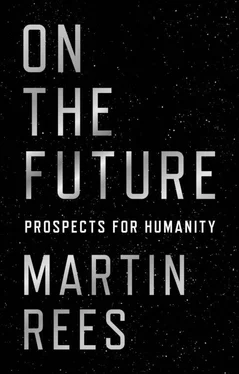
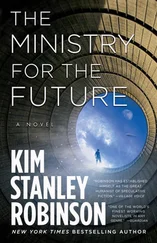
![Мартин Рис - Всего шесть чисел. Главные силы, формирующие Вселенную [litres]](/books/414169/martin-ris-vsego-shest-chisel-glavnye-sily-formir-thumb.webp)
